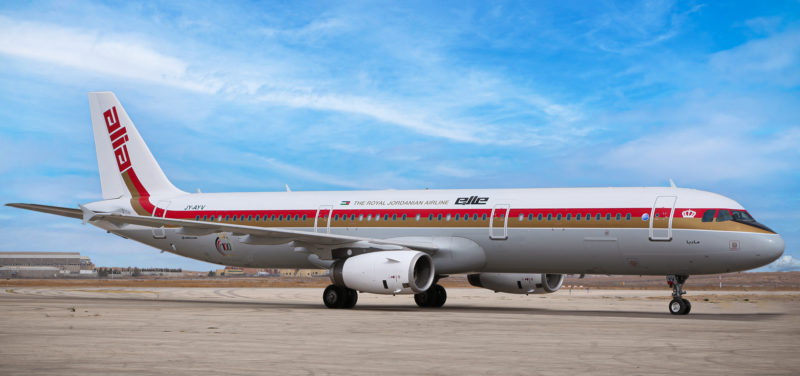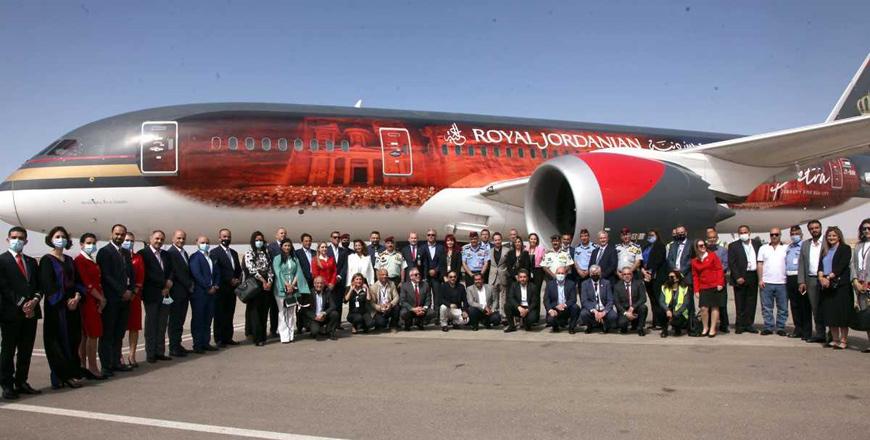Royal Jordanian (RJ) will complete a long-awaited fleet renewal decision for about 30 new aircraft within the next two months. Also, the number of its Boeing 787 fleet could be enlarged, with the larger 787-9.
Royal Jordanian Vice Chairman and CEO Samer Majali told me recently, over the next five years, Royal Jordanian has a major expansion plan in terms of destinations, frequencies, and fleet renewal.
"This plan is quite ambitious. We have an RFP (request for proposal) of a total of 30 aircraft including narrow-body and regional aircraft in the market. We are very optimistic".
"We are open for both, Airbus and Boeing and obviously the regional segment is Embraer and Airbus A220s“.
CEO Samer Majali
Fleet Expansion to 45 Aircraft
The new fleet will be a combination of replacement and growth. "65% of our fleet will be replaced and 25% is for growth", he said.
The Oneworld alliance member existing Embraer fleet will be sold, leased narrowbody aircraft should be replaced in the timeframe of 2022 to 2023.

"Royal Jordanian´s widebody fleet renewal is a bit down the line in terms of renewal, because its seven Boeing 787-8s are relatively young. We might expand initially and then replace some. We maybe grow the 787 fleet to eleven or twelve aircraft within the next five years." Majali said.
Majali said Royal Jordanian is also looking into the B787-9 and could exchange some of the 787-8s. "We were one of the B787 launch customers back in 2008. Finally we received the first aircraft in 2014 because of the delay from Boeing". He said at the time, there were only the B787-8 available and the 787-9 was only existing on the paper.
“We are also looking to all possibilities“, he said. The majority of its fleet is leased, only two B787 and four Embraers are owned.
Majali said, RJ is the dominant airline in the Levante region (Mediterranean), but it is not big enough in terms of size and it did not reach a critical mass (which is necessary to further exist). “We believe to achieve the necessary critical size by the end of this five-year plan when we operate 45 aircraft“.
Changing Focus
The last ten years Royal Jordanian have suffered from many crises in its home region which has followed finally by the Covid-19 pandemic. He said, Royal Jordanian delivered significant improvement recently and was able to bring back most of the fleet from storage. “About 70% of the fleet was in preservation, we are looking at those markets where there are the least medical restrictions implemented. One of them that came out immediately was the United States“. Flights to the US are exceeding expectations, even compared to before the COVID-19 crises. On its North Atlantic routes, Royal Jordanian see a lot of ethnic traffic in both directions.
He also said that Royal Jordanian´s transfer business at its hub Amman, the capital of Jordan, is changing. “We are investing much more now into the region, trying to connect Jordan and the region with the rest of our network“.
Majali said the carrier has a size that allows it to have good flexibility and move much faster to react. “We are looking at routes which have given us positive cash flow. We are very selective (regarding opening routes), to build up cash in the airline, regarding the inability of the Jordanian government to compensate us“, he said.
He describes the membership in the Oneworld Alliance as very important, especially the partnership with American Airlines. “Royal Jordanian was the first airline in the Middle East back in 2007/2008 to join an alliance“, Majali added.
Cover image: via Royal Jordanian Airlines




